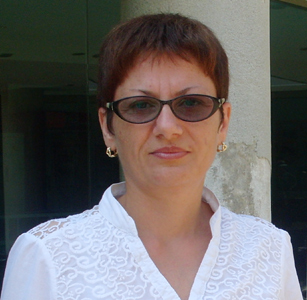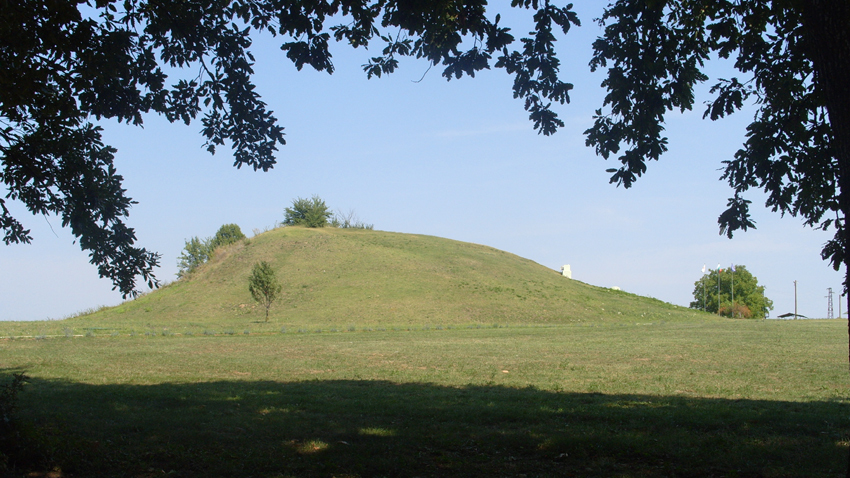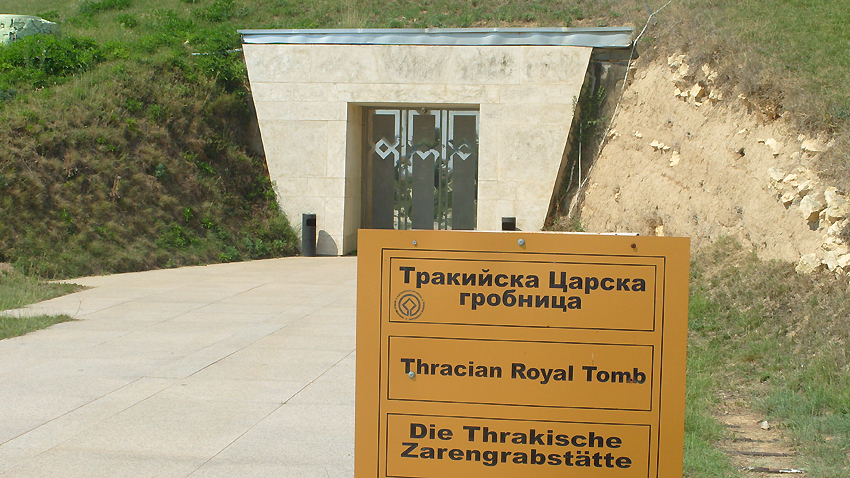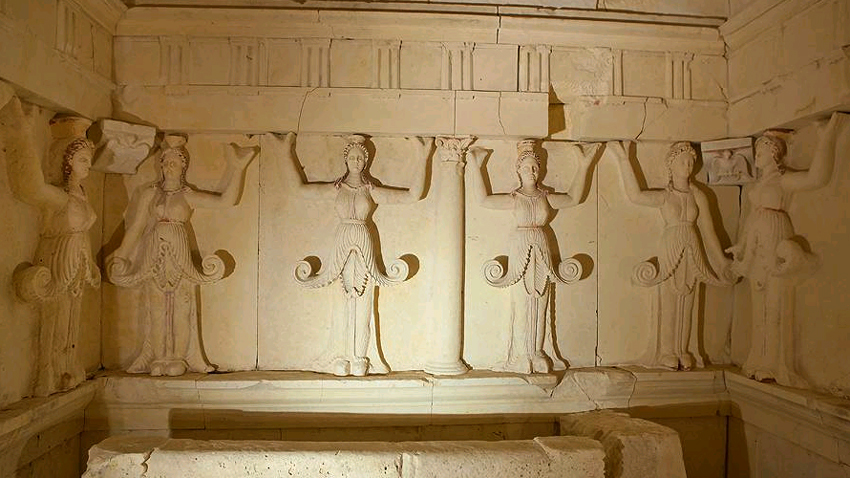One of the finest Thracian tombs in Bulgaria is to be seen near Sveshtari village, Isperih municipality. It is part of the Sboryanovo history and archaeology reserve. The tomb is the burial site of a royal couple from the Thracian tribe of the Getae and is on the UNESCO world cultural heritage list. It has been open to the public since 2000. Here is guide Elena Dimitrova with more:
 ”The Thracian tomb from the Sboryanovo archaeology complex includes a fortified Thracian centre, necropolises, sanctuaries that go back to the start of the first millennium BC. But it was at its zenith in the 3rd-4th century BC; the tomb itself dates back to the beginning of the 3rd century BC and was, in its time, a unique monument of Thracian cult architecture. What makes it unique is the combination of architecture, sculpture and paintings that is to be seen in no other Thracian tomb.”
”The Thracian tomb from the Sboryanovo archaeology complex includes a fortified Thracian centre, necropolises, sanctuaries that go back to the start of the first millennium BC. But it was at its zenith in the 3rd-4th century BC; the tomb itself dates back to the beginning of the 3rd century BC and was, in its time, a unique monument of Thracian cult architecture. What makes it unique is the combination of architecture, sculpture and paintings that is to be seen in no other Thracian tomb.”
Sboryanovo was a name that came into the spotlight when the team of archaeologists headed by Prof. Diana Gergova discovered a gold treasure.

“It was a grand discovery,” says Elena Dimitrova further. “The treasure was found in the big Sveshtari mound, the same Thracian necropolis where the Caryatid tomb (sculpted figures of women) is located. This means they belong to the same culture and add to our knowledge of the Thracian tribe of the Getae and their culture, of life in these lands and a civilization that was well advanced, leaving evidence of its existence that has come down to us in our day.”
Elena Dimitrova adds that these finds have helped make the Thracian tomb more popular and have brought in more tourists. The people who come here say they have never seen anything like it.

But what is it that makes this monument unique?
“The tomb is truly magnificent. What makes it different from other tombs is its architecture and that is something that is easy to see even at first glance. There are three vaulted chambers of varying height, which are not lined up along one axis but are located asymmetrically. The tomb is entirely covered by the mound and features sculpted decorations that are to be seen in no other Thracian tomb. There are ten female figures carved on the walls of the burial chamber, the resting place of the ruler of the Gettae and his wife. The figures are in high relief with coloured hair and clothing and are all different from one another. The burial chamber also features a scene of heroisation and deification of the Thracian ruler. It is this combination that is most striking.”

The area surrounding the tomb is as yet uncharted territory. There are mounds yet to be excavated; small wonder then that archaeologists are so interested in the Thracian city. But, as Elena Dimitrova says, popularizing and promoting the royal tomb at Sveshtari leaves a lot to be desired.

English version: Milena Daynova
Photos: Sevkiye Cakir and bulgariatravel.orgToday, 6 November, marks 104 years since the annexation of the Western Outlands in 1920. Traditionally Bulgarian territories in south-eastern Serbia and northern Macedonia were ceded to the Kingdom of Serbs, Croats and Slovenes in 1920 as a result of..
Volunteers joined the efforts to clean and restore the monastery St. Spas near Bakadzhik peak. The campaign is being organized on 2 November by Stoimen Petrov, mayor of the nearby village of Chargan, the Bulgarian news agency BTA reports. The..
There are three special days on the calendar of the Bulgarian Orthodox church, on which believers pray to God and give alms to honour the memory of their dear departed. The three All Souls’ Days always fall on the Saturdays before Meat..
The Museum of the Jewish People in Tel Aviv , Israel, today commemorates the 130th anniversary of the birth of Dimitar Peshev, a righteous man of the..
The Feast of the Epiphany - the entry of the Theotokos into the Temple - is one of the oldest and most revered feasts in the Orthodox world. It was..

+359 2 9336 661
